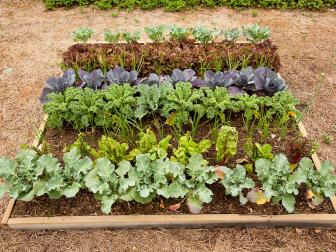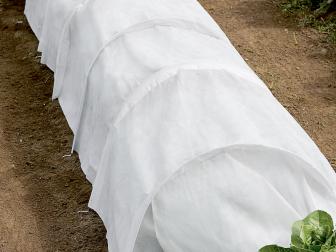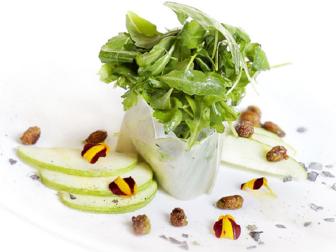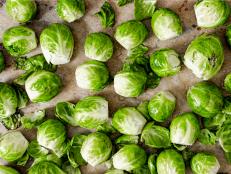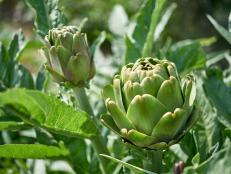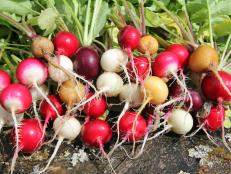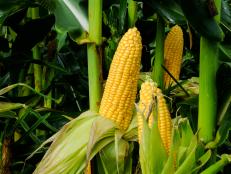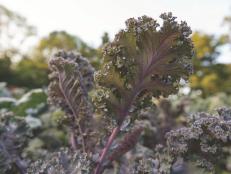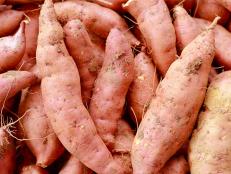Planting and Growing Arugula
Make some room in your vegetable garden for planting arugula — a flavorful green that's easy to grow in cool season gardens.
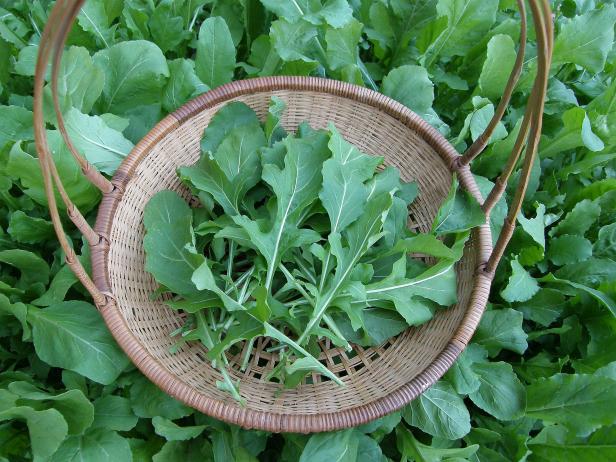
ReneesGarden.com
Arugula is one of many frost-tolerant greens that thrive in autumn’s cool air.

Arugula greens add a tangy zing to fresh salads or when cooked like spinach in other dishes. This flavorful, leafy veggie is easy to grow as a cool season cut-and-come-again crop. Make some room in your vegetable garden for this productive and versatile green.
Getting the Site Ready
Add Organic Matter
Mix plenty of compost or well-rotted manure into the garden bed before planting arugula. A healthy dose of organic matter will improve the soil’s water-holding capacity, increase drainage in heavy soils, feed the soil ecosystem and provide a steady flow of nutrients to the crop throughout the season.
Practice Crop Rotation
Vegetables in the same plant family tend to be susceptible to the same pest and disease pressures. Arugula is in the Brassica family, and its relatives include common cool-season vegetables like broccoli, cabbage, kale, radish and turnip. Pests can lay their eggs or overwinter in the soil, and disease populations may build in the garden bed. Growing relatives in the same area and rotating where they are grown each season can help protect them from these health issues.
Arugula Companion Plants
Some plants grow better together. Plant partners can attract beneficial insects, discourage pests or build the soil. There may not be many studies that look at plant partners for arugula specifically, but there is a wealth of research on companions for arugula’s relatives in the brassica family, like broccoli. Here are a few plant combinations to try in your garden:
- Cultivate open-faced flowers in the aster family — including daisies, sunflowers and zinnias — to attract insects that eat arugula pests.
- Interplant with fava beans to camouflage arugula from flea beetles.
- Sow a trap crop of radishes to lure flea beetles away from your arugula seedlings. Plant the trap crop several feet away and destroy infested radishes to keep them from harboring pests that will infest your arugula.
- Plant large summer crops like tomatoes, squash and corn between rows of spring-grown arugula. As these warm-season vegetables grow, the cool shade they cast over arugula can extend the harvest by postponing heat-induced flowering or bolting.
- Alternate rows of arugula with crops that form a taproot, such as carrots and beets, to maximize the use of space. Arugula’s leafy habit and fibrous roots marry well with many root vegetables that form a narrow taproot and an upright rosette.
How to Start a Fall Garden
Plant these fall vegetables in the summer to enjoy a haul of fresh produce when the temperatures cool.
How to Grow Arugula
When Does Arugula Grow Best?
Arugula thrives in cool weather, which makes it an excellent crop for spring and fall vegetable gardens. Some warmer regions of the country can grow arugula through the winter — especially where temperatures rarely dip below 22 degrees.
If you’re growing arugula in the heat of summer, look for a spot with light shade. This may help keep the plants slightly cooler and delay flowering (or "bolting") during hot summer months.
Planting Arugula
Arugula grows best when sown directly into the garden. Plant arugula seeds about 1/2 inch deep and 1 inch apart in rows, and space rows between 4 and 8 inches apart. Although arugula makes an excellent cut-and-come-again crop, you can also plant a new succession every 2 weeks to extend its season.
No garden bed? No problem! Growing arugula in pots is simple. Fill a shallow container with soil or a planting mix, scatter the seeds across the soil surface, lightly cover and then gently water every few days until sprouts appear. Place the pot in a sunny spot outdoors. Growing arugula indoors isn’t ideal, but it is possible to get a decent crop grown on a sunny windowsill.
Growing and Caring for Arugula Plants
Water Needs
Arugula is native to the Mediterranean, which means that it can tolerate some dry weather. If you’re growing arugula during cool weather, water arugula seedlings every few days until they’re established, then as needed. Dry soil and hot weather increase the risk of arugula going to seed. Water deeply and regularly throughout the summer to delay bolting and extend the harvest.
Scout for Flea Beetles
Although arugula can have other health problems, it is especially susceptible to flea beetle damage. Flea beetles eat many tiny holes throughout the foliage. Although you can still eat arugula that has flea beetle damage, it may not look as appetizing on the plate.
Floating row covers are a great way to protect your crop from flea beetles if you’re growing arugula in a spot where it and its brassicaceous relatives have not been grown for the past three years (see “Practice Crop Rotation” above). Flea beetles overwinter in garden soil, which means that if a susceptible crop has been grown in this space in the past, a floating row cover will actually hold flea beetles inside the cover with the crop.
Protect Plants With Row Covers
Learn how to properly use garden row covers to protect plants from insect pests and extreme weather conditions.
How to Harvest Arugula
Cut back the tender leaves as soon as they are a couple of inches long. Take care not to damage the small rosette of leaves in the center of the plant. By leaving this new growth intact, your arugula plant will continue to produce new growth after several harvests.
Older leaves have a more bitter taste that adds a sharp flavor to a dish. Cut or pick these older leaves from the outer edge of the plant while letting the central rosette continue to grow.
Regularly harvesting arugula leaves will delay flowering or bolting. Once arugula has bolted, the plant will stop putting on new foliage and the existing leaves will become too bitter for most palates to handle. Arugula’s dainty white flowers can be used as a beautiful, peppery-tasting garnish, and the seed pods make a tangy embellishment, too.
Arugula Recipes
Arugula Recipes from Food Network
Try some of Food Network's best arugula salad recipes.
More Grow Guides
- How to Grow Asparagus
- How to Plant, Grow and Harvest Basil
- How to Plant and Grow Broccoli
- How to Grow Carrots
- How to Plant and Grow Onions
- Planting and Growing Eggplant
- How to Plant, Grow and Care for Tomatoes
- How to Grow Celery
- Planting and Growing Spinach
- Planting and Growing Beets
- Planting and Growing Cabbage

.-Battle-on-the-Beach-courtesy-of-HGTV.-.jpg.rend.hgtvcom.196.196.suffix/1714761529029.jpeg)




